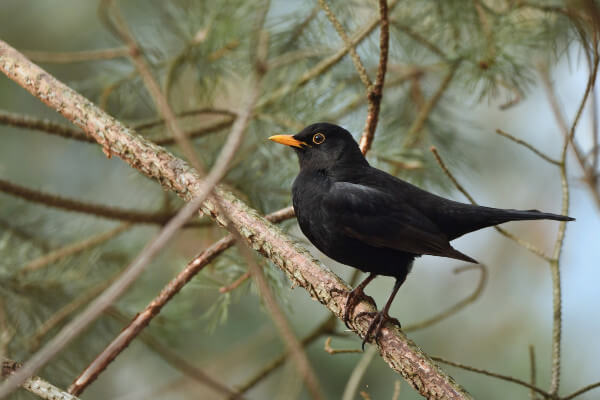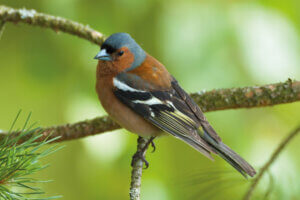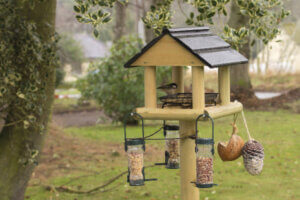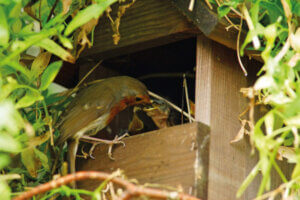Garden Sing-Along

Bring music to your life by attracting your own dawn chorus.
There’s nothing more soothing and calming than waking up to a fresh, sunny, dew-glistening garden, nitrates lifting up off the soil and the gentle tweets, chirps and warbles made by an array of beautiful birds.
Nature’s early-morning concert is one of the summer’s greatest pleasures, and with a little encouragement, we can bring this dawn chorus to our front and back doors.
The birds you want to attract, and their songs
Robin – The robin produces a twinkling, crystal-like sound that flutters through the air. You’ll hear this little fellow all year round.
Great tit – A repetitive two-toned whistle that cuts through the air and is most prominent in early spring.
Wren – For many, the best improvised whistle of them all, with a raft of twists and twirls ending up in a rattling cacophony of noise towards the end.
Willow warbler – Best characterised for a chain of notes that lowers as it progresses, the warbler’s song has clear gaps in between notes and a powerful chirp.
 Chaffinch – Heard throughout spring and summer, the chaffinch offers a punchy, powerful array of notes that slows towards the end.
Chaffinch – Heard throughout spring and summer, the chaffinch offers a punchy, powerful array of notes that slows towards the end.
Blackbird – So typical of the bird itself, the blackbird’s song features notes drawn into each other that offer a range of tones and a stylish array of chords.
Song thrush – Heard throughout the year, the song thrush makes a sound closest to those slightly shrill mobile phone ringtones…but nicer!
Goldfinch – With elegant inflections and the occasional sound of a penny whistle thrown in for good measure, a chaffinch has an eclectic song and is heard from early spring.
The best ways to attract songbirds
 Bird feeders – At the heart of every bird’s focus is survival, and first and foremost that means a ready supply of food.
Bird feeders – At the heart of every bird’s focus is survival, and first and foremost that means a ready supply of food.
Unknown to many, the type of food you leave out will directly influence the species of bird you attract. For instance, suet balls are favourites with robins, blue tits and long-tailed tits; niger seeds are loved by greenfinches and goldfinches; starlings, robins and blackbirds will come if mealworms are on offer; while tits, finches and siskins love the fatty proteins of peanuts.
With this in mind then, spreading various specialist bird feeders out means colonies of birds will inhabit different parts of your garden.
Water – Whether bathing, playing in it or drinking the stuff, a supply of fresh water is one of the best ways to get birds engaged in your garden. The flat, shallow bird bath is a great option and can be decorated with pebbles, rocks, ivy and perhaps even some sprigs of water lettuce.
Plants – Edible plants, berries, shrubs and wildflowers will keep your birds hanging around for long periods. Why go hunting elsewhere when they have a bounty of food and colour on their doorstep… or, rather, your doorstep?!
Protection – Birds are always on the lookout for cats and other predators ready to disrupt their everyday pleasures of gliding from one branch to another, so the more space you can offer your feathered friends, the more they will relax and hang about.
By the same logic, don’t expect them to congregate around dense bushes where attackers may lay in wait – instead, position what they need in spacious places where they can keep an eye on danger.
 Birdboxes – Many of us have attempted and failed to lure birds to our garden using birdboxes. In reality it’s a task that may not pay dividends until a year or so down the line; but if you persist with hanging these high enough away from cats and squirrels, and in a semi-sheltered spot where birds can nest in peace, you will eventually attract a family in.
Birdboxes – Many of us have attempted and failed to lure birds to our garden using birdboxes. In reality it’s a task that may not pay dividends until a year or so down the line; but if you persist with hanging these high enough away from cats and squirrels, and in a semi-sheltered spot where birds can nest in peace, you will eventually attract a family in.

